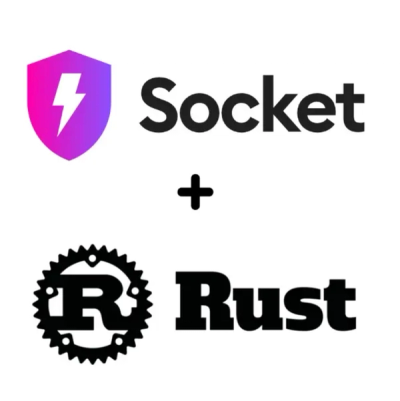
Security News
Crates.io Users Targeted by Phishing Emails
The Rust Security Response WG is warning of phishing emails from rustfoundation.dev targeting crates.io users.
Granate container for annotated GraphQL
GraphQL is an amazing technology that allows to build application APIs in a much better way than by implementing REST services. On top of this, GraphQL can be defined using a textual representation (schema language) which offers a lot of really useful possibilities. Granate leverages these possibilities.
To understand better how to use granate, please have a look at the examples in granate-showcase
In order to use granate from the CLI, install granate-cli with the following command:
> npm i -g granate-cli
If you prefer to use granate as an API, install granate and graphql (peer dependency of granate) in your application with the following command:
> npm i granate graphql --save
Imagine that you want to implement a Todo application and you have drafted a GraphQL schema which looks as follows:
# Domain entity which represents a Todo object
type Todo {
id: ID!
title: String!
completed: Boolean!
}
# Query model for Todos
type Query {
# Returns the collection of Todos filtered by completed status (optional)
todos(completed: Boolean): [Todo]
}
# Mutations for Todos
type Mutation {
# Adds an uncompleted Todo with the given description
addTodo(title: String!): Todo!
# Removes a Todo by id
removeTodo(id: ID!): Todo!
# Toggles the completed state of a Todo by id
toggleTodo(id: ID!): Todo!
}
As of graphql-js@0.7.0, by
using the buildSchema() and graphql() functions together with an object like the one below as
rootValue, it is then possible to execute GraphQL queries and mutations against the object as if it were a
full-fledged GraphQL endpoint.
export class Todos {
constructor() {
this.nextId = Date.now();
this.todos = [];
}
todos({completed}) {
return this.todos.filter(completedFilter);
function completedFilter(todo) {
return completed === undefined ? todo : todo.completed === completed;
}
}
addTodo({title}) {
const todo = {
id: String(this.nextId++),
title,
completed: false
};
this.todos.push(todo);
return todo;
}
removeTodo({id}) {
const todo = this.todos.filter(todo => todo.id === id)[0];
todos.splice(this.todos.indexOf(todo), 1);
return todo;
}
toggleTodo({id}) {
const todo = this.todos.filter(todo => todo.id === id)[0];
todo.completed = !todo.completed;
return todo;
}
}
Then you can use this as:
import { buildSchema } from 'graphql';
import { Todos } from './todos';
const schemaText = `
# Domain entity which represents a Todo object
type Todo {
... content skipped
`;
const query = `
{
todos {
title
completed
}
}`;
const todos = new Todos();
graphql(buildSchema(schemaText), query, todos).then(result => console.log(result)); // prints the query result
And if you want to make this API available through HTTP:
import express from 'express';
import graphqlHTTP from 'express-graphql';
import { buildSchema } from 'graphql';
import { Todos } from './todos';
const PORT = 4000;
const schemaText = `
# Domain entity which represents a Todo object
type Todo {
... content skipped
`;
const todos = new Todos();
const graphqlHTTPConfig = createGraphQLHTTPConfig(buildSchema(schemaText), todos);
express()
.use('/graphql', graphqlHTTP(graphqlHTTPConfig))
.listen(PORT, () => console.log(`Listening on port: '${PORT}'...`));
function createGraphQLHTTPConfig(schema, rootValue) {
return {
schema,
rootValue,
graphiql: true
};
}
Wouldn't it be cool if we could avoid defining the rootValue implementation and use instead mock data like the one
generated by casual or faker.js?
This would allow to mock an API just by using a GraphQL schema text file.
Well, we easily can if we use the package graphql-tools
as explained in Mocking your server with just one line of code.
rootValue?###... enter Granate!
FAQs
Granate container for annotated GraphQL
The npm package granate receives a total of 1 weekly downloads. As such, granate popularity was classified as not popular.
We found that granate demonstrated a not healthy version release cadence and project activity because the last version was released a year ago. It has 1 open source maintainer collaborating on the project.
Did you know?

Socket for GitHub automatically highlights issues in each pull request and monitors the health of all your open source dependencies. Discover the contents of your packages and block harmful activity before you install or update your dependencies.

Security News
The Rust Security Response WG is warning of phishing emails from rustfoundation.dev targeting crates.io users.

Product
Socket now lets you customize pull request alert headers, helping security teams share clear guidance right in PRs to speed reviews and reduce back-and-forth.

Product
Socket's Rust support is moving to Beta: all users can scan Cargo projects and generate SBOMs, including Cargo.toml-only crates, with Rust-aware supply chain checks.